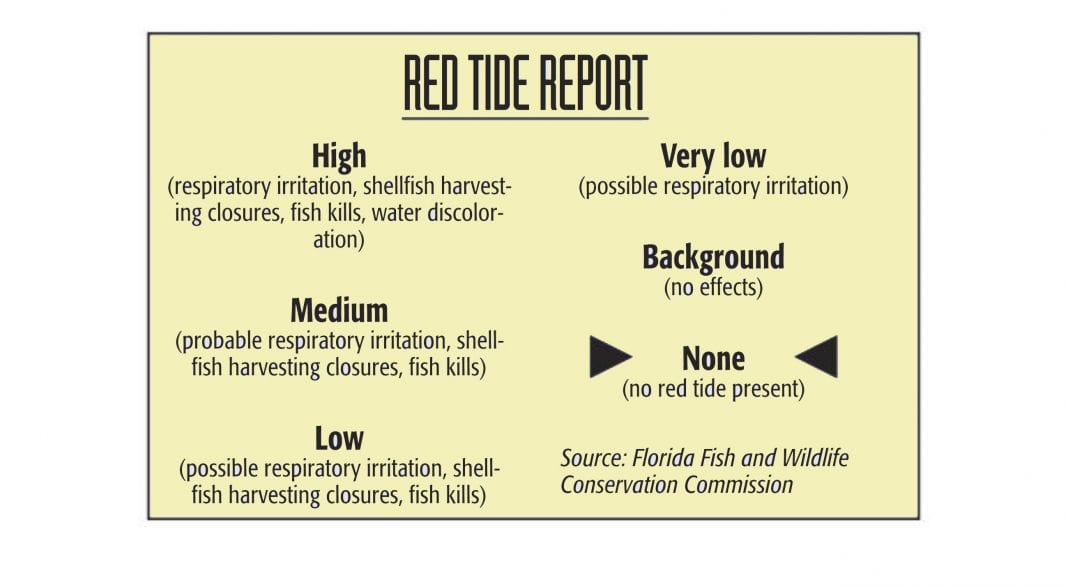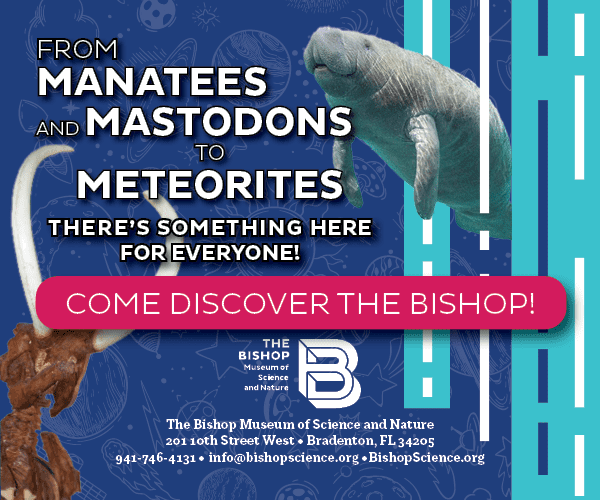UPDATED SEPT. 12, 2021 – ANNA MARIA ISLAND – For the second week in a row, no red tide was detected in any water samples tested in Manatee County last week, according to Friday’s Florida Fish and Wildlife Conservation Commission weekly report.
The toxic algae began appearing near Piney Point in mid-April after 215 million gallons of contaminated water was dumped into Tampa Bay at the former phosphate plant. The water contained the nutrients nitrogen and phosphorus, which act as fertilizer for red tide.
The discharge was approved by the Florida Department of Environmental Protection to prevent the collapse of a compromised gypsum stack containing the contaminated water. The former phosphate plant is in receivership and is slated for closure and the disposal of the remaining contaminated water.
Despite the clean Manatee County report, red tide remains in waterways in Pinellas County to the north and Sarasota County to the south. Fish kills suspected to be related to red tide were reported in or offshore of Manatee County, as well as Pinellas, Sarasota, Charlotte and Lee counties over the past week.
Red tide produces a neurotoxin called brevetoxin that can cause respiratory irritation, coughing, and more serious illness for people with severe or chronic respiratory conditions such as asthma, emphysema or COPD, according to the Florida Department of Health.
Health officials recommend that people experiencing symptoms stay away from the water and go inside to an air-conditioned space with closed windows and a clean A/C filter. Wearing masks, especially during onshore winds, is also advised.
Health officials warn against swimming near dead fish, and advise keeping pets away from dead fish and seafoam, which can contain high concentrations of red tide. Pets are not allowed on Anna Maria Island’s beaches but are allowed on the Palma Sola Causeway on Manatee Avenue.
Officials also warn that consuming shellfish exposed to red tide can cause neurotoxic shellfish poisoning.
Updated red tide forecasts are available at habforecast.gcoos.org and at visitbeaches.org.
































